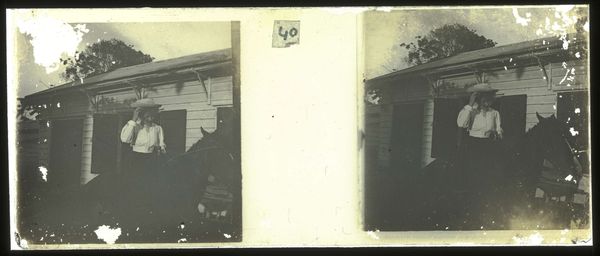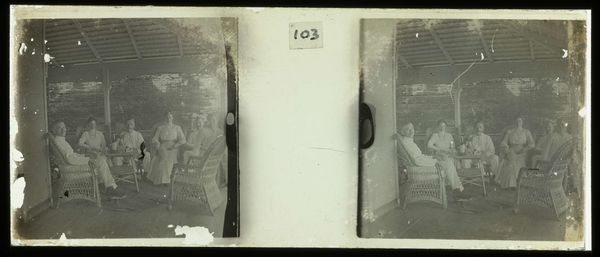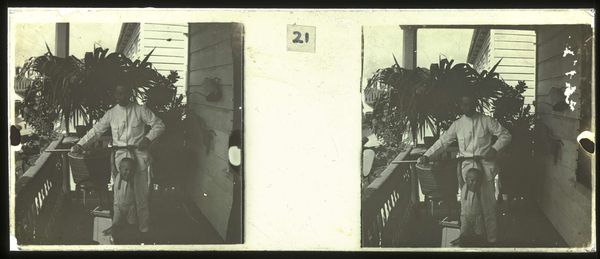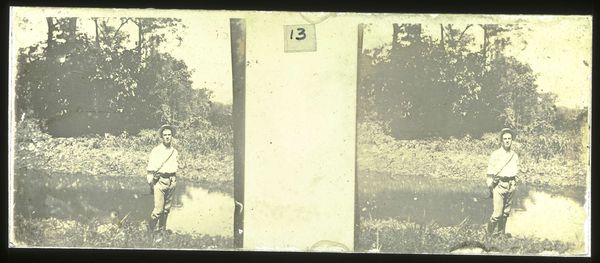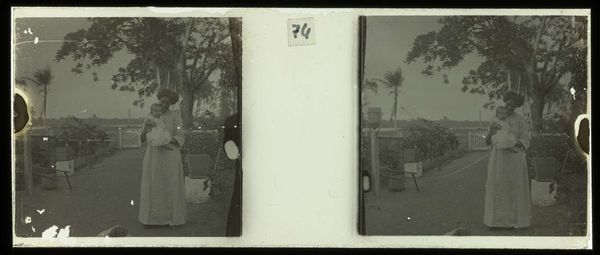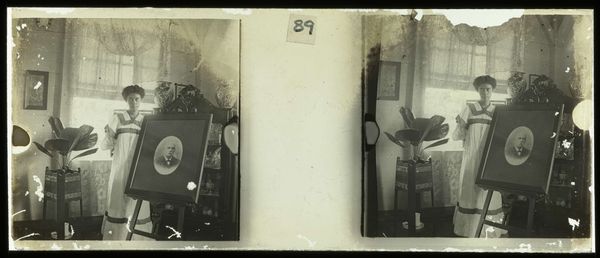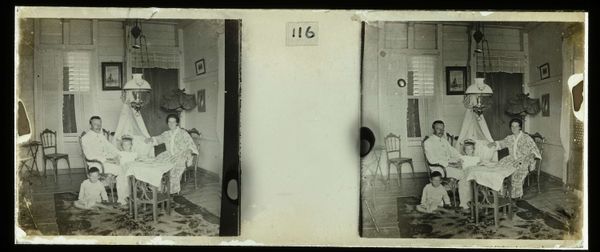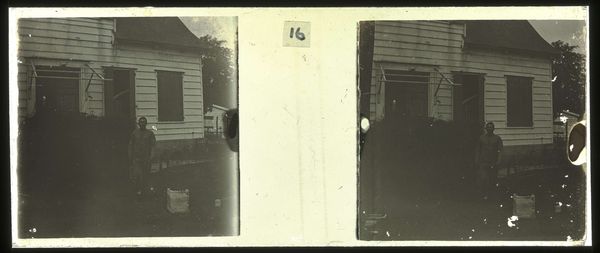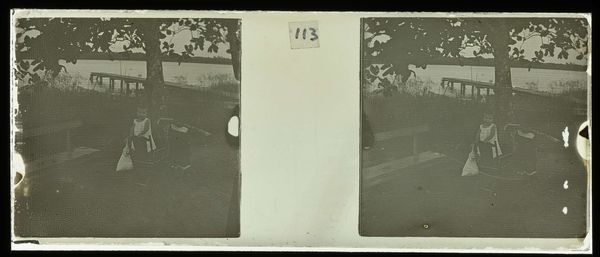
photography, gelatin-silver-print
#
portrait
#
photography
#
orientalism
#
gelatin-silver-print
#
cityscape
Dimensions: height 4.5 cm, width 10.5 cm
Copyright: Rijks Museum: Open Domain
Curator: What immediately strikes me is the sense of quiet contemplation. The woman, posed so serenely on the veranda, exudes a remarkable calm, almost melancholic, despite the warm surroundings. Editor: Indeed. This is a gelatin silver print, created sometime between 1913 and 1930, by Theodoor Brouwers. It’s titled "Heerenstraat 18 in Paramaribo," placing it firmly within a specific colonial context of early 20th-century Suriname. It depicts the cityscape but also portraiture and perhaps even orientalism style through the sitter's gaze and environment. Curator: That colonial context is essential. How might the politics of representation, the gaze of the photographer, shape our understanding of this image? The woman seems posed, positioned within the trappings of domesticity—yet is this a genuine moment of leisure or a staged performance for the colonial audience? Editor: Brouwers likely aimed to capture the exotic allure of Paramaribo, reinforcing existing stereotypes of the region. But there's also an intimacy to the image. The details, like the wooden fretwork and the overgrown plants, point to an engagement with the local environment, beyond simple exploitation. We must also think about the institution presenting it; what is the impact of this work being displayed in the Rijksmuseum? Curator: It becomes crucial to consider how identity, specifically gender and race, are negotiated here. Is she empowered by owning domestic space or complicit in its colonial fantasy? What do you read from her positioning within the frame? Editor: She commands a central space in the frame but there's a vulnerability implied by the very act of being photographed for posterity, or to become a visual story for European narratives. The composition almost certainly dictates that viewers must ask themselves: What stories of agency are not revealed through that encounter and by this medium? Curator: Those layers of meaning enrich the piece significantly, moving it beyond just a picturesque scene. We see the image now as one layered with colonial tensions. Editor: Agreed, the photograph offers not a simple snapshot of history, but rather an intriguing site to critically examine colonialism, representation, and the untold stories of those who lived it.
Comments
No comments
Be the first to comment and join the conversation on the ultimate creative platform.

